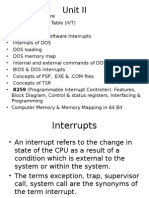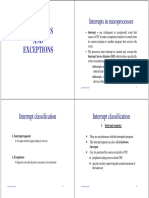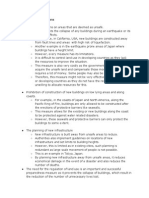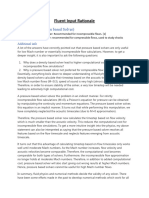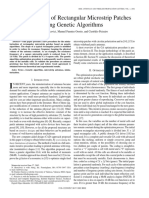0% found this document useful (0 votes)
22 views25 pagesInterrupt
The document provides an overview of interrupts in microcontroller systems, detailing concepts such as the volatile keyword, interrupt types, and context switching. It explains how interrupts are triggered, handled, and the differences between synchronous and asynchronous interrupts, along with specific implementations in AVR and ARM architectures. Additionally, it covers interrupt timing, nesting, exceptions, and mechanisms like tail-chaining and late-arriving interrupts to optimize performance.
Uploaded by
modyesam25Copyright
© © All Rights Reserved
We take content rights seriously. If you suspect this is your content, claim it here.
Available Formats
Download as PDF, TXT or read online on Scribd
0% found this document useful (0 votes)
22 views25 pagesInterrupt
The document provides an overview of interrupts in microcontroller systems, detailing concepts such as the volatile keyword, interrupt types, and context switching. It explains how interrupts are triggered, handled, and the differences between synchronous and asynchronous interrupts, along with specific implementations in AVR and ARM architectures. Additionally, it covers interrupt timing, nesting, exceptions, and mechanisms like tail-chaining and late-arriving interrupts to optimize performance.
Uploaded by
modyesam25Copyright
© © All Rights Reserved
We take content rights seriously. If you suspect this is your content, claim it here.
Available Formats
Download as PDF, TXT or read online on Scribd
/ 25




